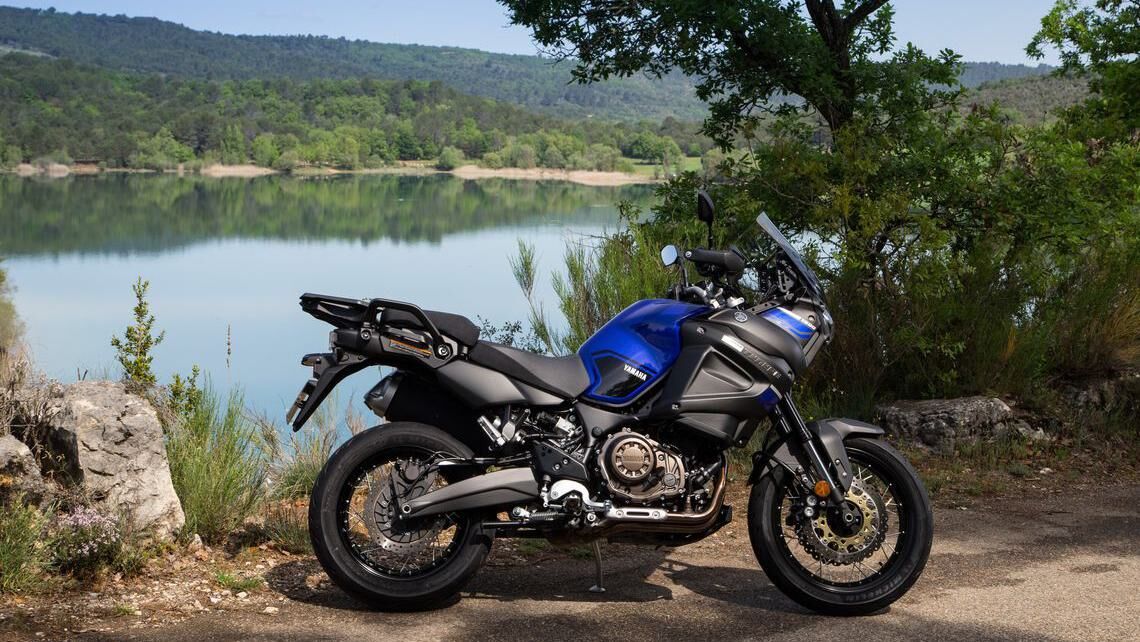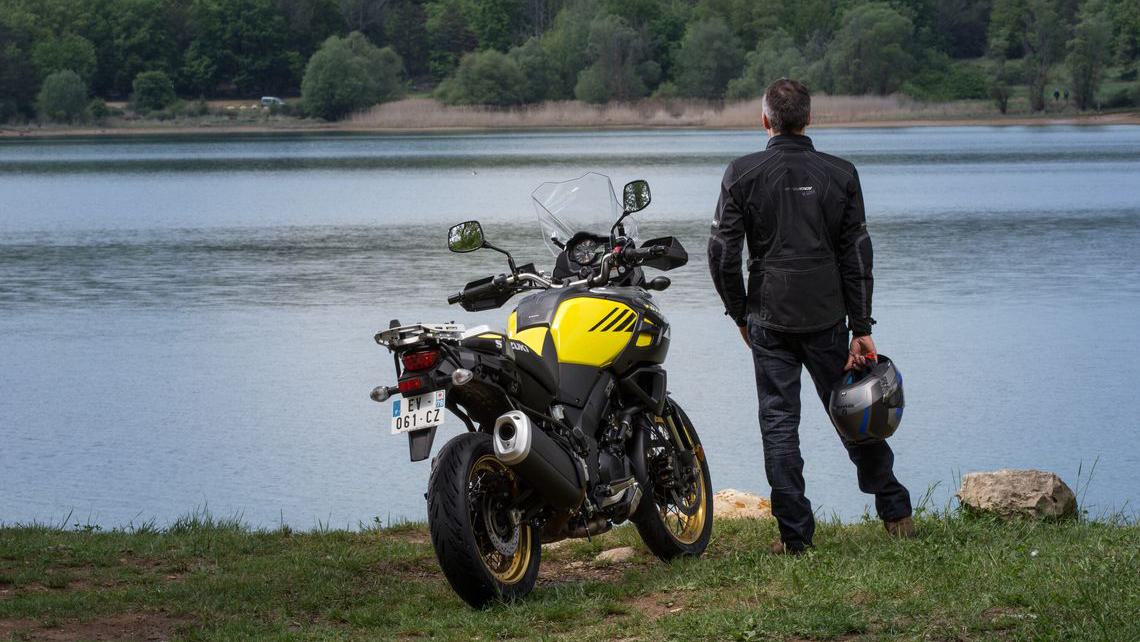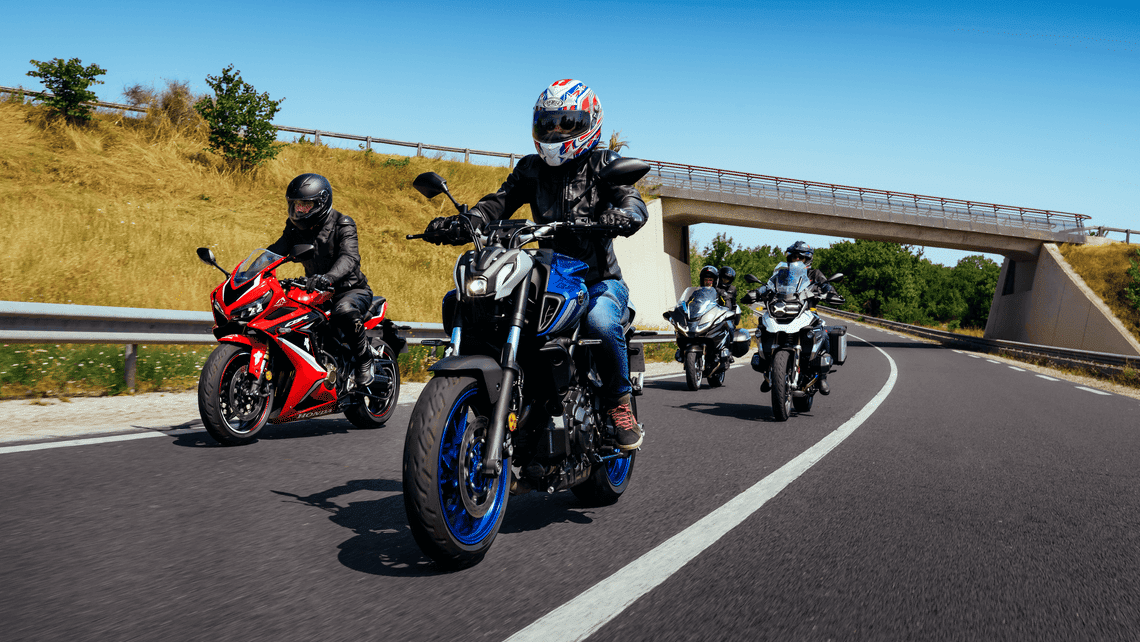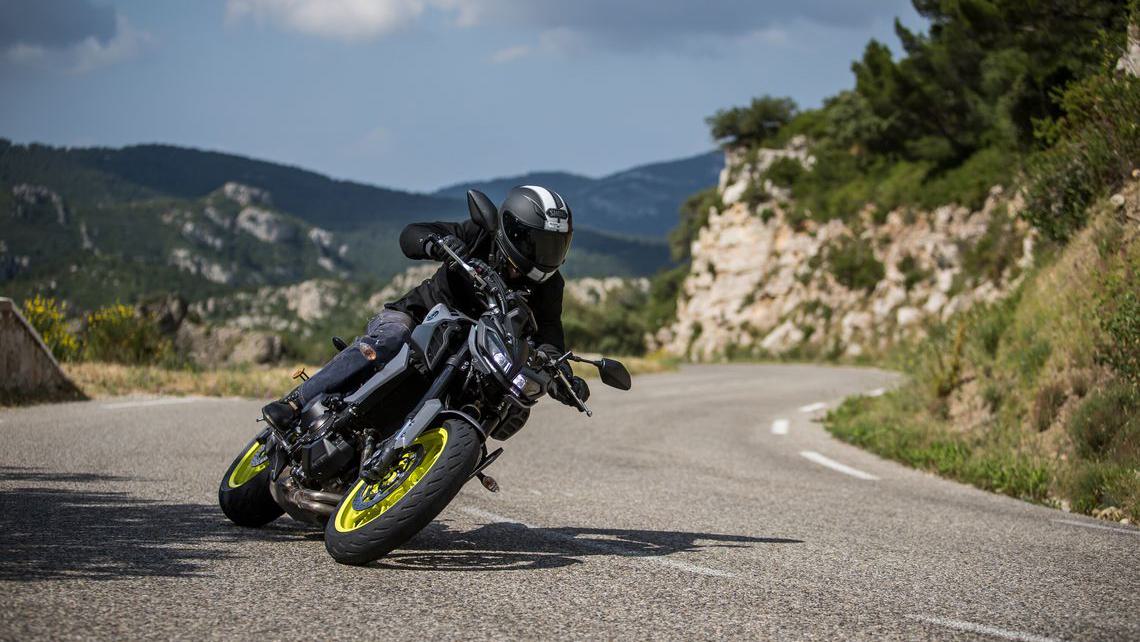MOTORCYCLE SAFETY: HOW TO IMPROVE IT?
Michelin, a member of the European Road Safety Charter, contributes to these objectives by carrying out awareness raising and educational campaigns for road users.
How can you improve your safety on a motorcycle? Our experts will give you the answers in this article.
1 - Prepare your motorcycle for greater safety

Before you even hit the road, there are important points to check on your bike to ensure that the bike itself doesn’t pose a risk to your safety.
The brakes
Ensure that your brake pads and brake disks are in good working order (warping, abnormal wear and tear, irregularities) as well as the brake drums Also check the level of the brake fluid (right handlebar) as well as its colour: the darker the brake liquid is, the older and less effective it is.
Motor oil
Examine its level in the sump, with a hot engine, two minutes after it’s stopped, keeping the motorcycle straight. Check that there is isn’t any seepage, or even an oil leak.
For a long ride (1,000 km), check the oil level three quarters of the way through the trip (wait 15 min. after stopping so that it goes back to the bottom of the sump).
Lighting
Being visible on the road is essential for motorcycle safety: check the light bulbs, don’t hesitate to change them preventively.
The chain or the belt
It's an element of wear and tear that is particularly important to keep an eye on and may compromise your safety on the bike. Too much tension and it will break. If a chain is too loose it can jump off the sprocket bind.
For a long ride (1,000 km), take a break three quarters of the way through the trip and check the tension of the chain (by lubricating it).
Tyres
A complex high-tech product, the tyre is the only contact point between the vehicle and the ground. Although the surface in contact with the ground is small, the tyre’s mission remains no less essential for your safety on the bike. It has to carry out a number of tasks: turn, steer, bear loads, brake, transmit, cushion, last.
To get the most out of your tyres, it is thus essential that you ensure that the pressure is that recommended by the manufacturer.
You can entrust your bike to a professional near you to verify all of these safety issues.
2 - Safety gear for your protection
As you know, riding a motorcycle is nothing like driving a car. In the event of a fall, there’s no bodywork to cushion the impact. It’s your body that’s exposed. It’s thus a good idea to gear up in a way that offers you the maximum amount of protection.

Ensure that you wear a helmet that fits (doesn’t move around), boots or shoes that protect your ankles, a jacket with body armour and kevlar pants. An airbag under the jacket also offers good protection for your vital organs. And to be visible to other drivers, don’t hesitate to wear reflecting strips.
For more information on this subject, see our article on protective equipment for motorcycles.
3 - Advice to improve motorcycle safety on the road
Once on the road, it’s your conduct that plays a major role for your safety on the bike, and for the safety of other drivers. You must learn to adapt your driving to the situation. For example, if you’re riding in a group, with a passenger, with a lot of luggage, in the mountains.
Motorcycle safety in groups
Riding as part of a group involves certain rules that everyone should follow so that you can enjoy your road trip as safely as possible. You have to have the right distances between bikes and ride in a staggered formation so that everyone has good visibility and can anticipate possible dangers.
For more information on the subject, see our article "Riding in a group".

Motorcycle safety with a passenger
Riding with a passenger is a responsibility for the driver. It requires preparation, especially if the passenger is not accustomed to riding on the back of a motorcycle. There are some essentials: explaining to the passenger how to get on and off the bike, and how to behave once on the road. Especially how to follow your movements without resistance when cornering.
For more information on the subject, see our article "Riding with a passenger".
Safety with a laden down motorcycle
A motorcycle carrying a load requires more anticipation on the road. Braking is directly affected by the weight, which means you must give yourself a greater margin to compensate for the lengthening of the braking distance.
Also be careful of road handling, which is worsened by the alteration of the centre of gravity and the increase of the total rolling weight. The reaction of the suspension may have effects on steering, such as fishtailing or a lack of precision.
Similarly, the increased windage may cause swerving, especially during gusts of wind. Take account of that with caution and be careful of turbulence when passing heavy vehicles.
You should also know that as suspensions are lower, so too is the ground clearance. That may take you by surprise, especially when cornering, where the kickstand has a tendency to touch the pavement quicker than usual.
Finally, the reduced acceleration means that it is more difficult to pass if you do not already have a lot of momentum. Be careful not to keep your usual reflexes, especially if you have a bike that is light when it is not weighed down.
Motorcycle safety in the mountains
Riding in the mountains can be very pleasant for riders who are looking for wide open spaces, but you should always keep in mind that the mountains have a number of dangers.

The climate can be extremely unpredictable, especially in the high mountains. Just because it was sunny and warm when you set out doesn’t mean you won’t be shivering with cold a few hundred metres higher up. Plan to take rain equipment and warm clothing, even a complete change of clothing.
With rapidly changing weather conditions, visibility can worsen very quickly and compromise your safety on the bike. Sometimes from one valley to another, even from one turn to another. Changing grip requires increased attention, whether you're in the middle of a storm or riding after one. Consult the various meteorological services before heading out. They will provide you with the latest forecasts.
Another specificity of mountain roads: road surfaces that can hide some surprises. At the end of winter, the pavement may be seriously damaged after several weeks of being iced over. Its damaging effects remain visible in the summer, a period road workers take advantage of to undertake repair work, which leads to the presence of gravel and temporary work sites.
Even on a road in the middle of nowhere, you should nonetheless expect to encounter a truck, a bus, a motorhome, a tractor or even an animal... In a blind corner, your trajectory will have to take into account this permanent threat, with the widest angle possible so that you can have the best visibility.
Mountain curves, sometimes hairpins, mean that there is reduced visibility or no visibility and thus must be taken on with care to ensure safety on the bike.
For more information on how to take curves on a bike, see our article "How to corner on a motorcycle".
Article written with the technical contribution of BMC Moto.